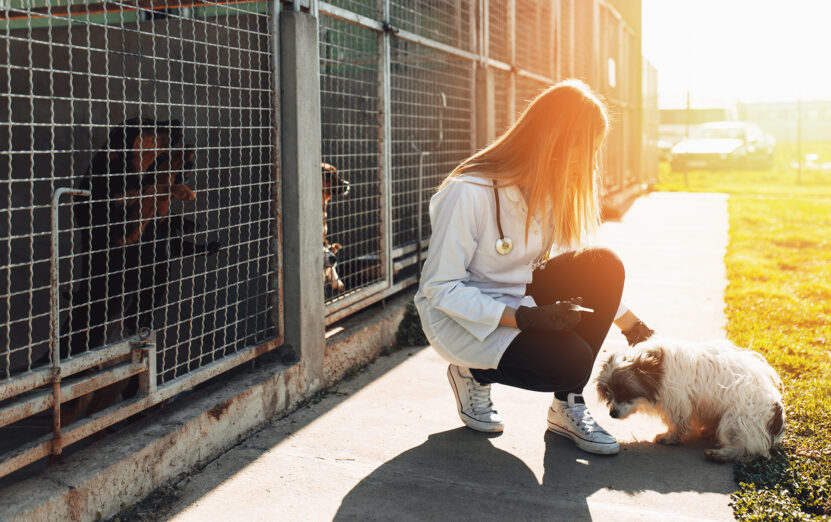
Ensuring the health and well-being of animals is a top priority for pet owners and professionals working in animal care facilities.
One critical aspect of maintaining a healthy environment for pets is regular kennel disinfection. If you are looking to buy product for this purpose, check out zwingerreiniger.
The process goes beyond mere cleaning; it involves the systematic elimination of pathogens that can cause diseases and discomfort to animals.
In this article, we will explore why regular kennel disinfection is essential for animal health, the potential risks of neglecting this practice, and the best practices for effective disinfection.
The Importance of Kennel Disinfection
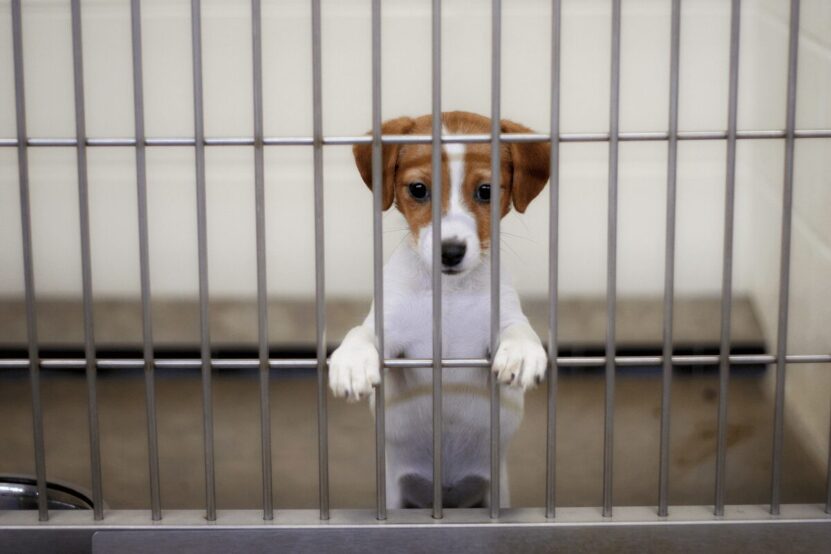
1. Prevention of Infectious Diseases
Kennels, whether used for boarding, sheltering, or veterinary purposes, are high-traffic areas where multiple animals are housed in close proximity. This environment can be a breeding ground for infectious diseases such as:
- Kennel cough ─ A highly contagious respiratory disease caused by a combination of bacteria and viruses, including Bordetella bronchiseptica and canine parainfluenza virus.
- Canine parvovirus ─ A severe viral disease that affects the gastrointestinal tract and can be fatal, especially in puppies.
- Feline upper respiratory infections ─ Common in shelters and caused by viruses such as feline herpesvirus and calicivirus.
Regular disinfection significantly reduces the presence of these pathogens, thereby preventing outbreaks and ensuring the health of the animals.
2. Control of Parasites and Pests
Parasites such as fleas, ticks, and mites can thrive in unclean environments. These parasites not only cause discomfort to animals but can also transmit serious diseases. Regular disinfection helps to eliminate these pests and their eggs, breaking the life cycle and reducing the risk of infestation.
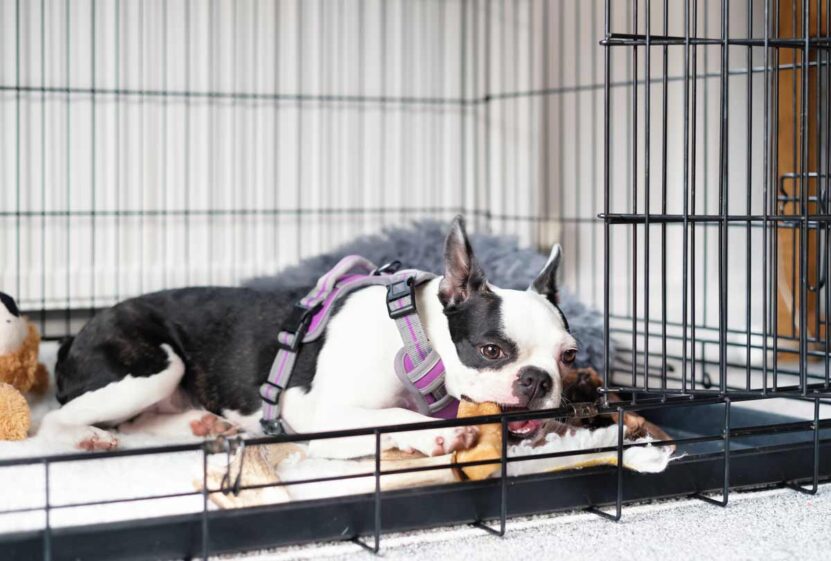
3. Maintenance of a Healthy Environment
A clean and disinfected kennel environment is crucial for the overall well-being of animals. It reduces stress and anxiety, promotes faster recovery for sick or injured pets, and contributes to their overall quality of life.
Animals are more likely to feel comfortable and secure in a sanitary environment, which positively impacts their mental and physical health.
4. Compliance with Health and Safety Regulations
Animal care facilities are subject to stringent health and safety regulations. Regular disinfection is often mandated by these regulations to ensure a high standard of care.
Compliance with these standards not only prevents potential fines and legal issues but also demonstrates a commitment to providing a safe and healthy environment for animals.
Risks of Neglecting Kennel Disinfection
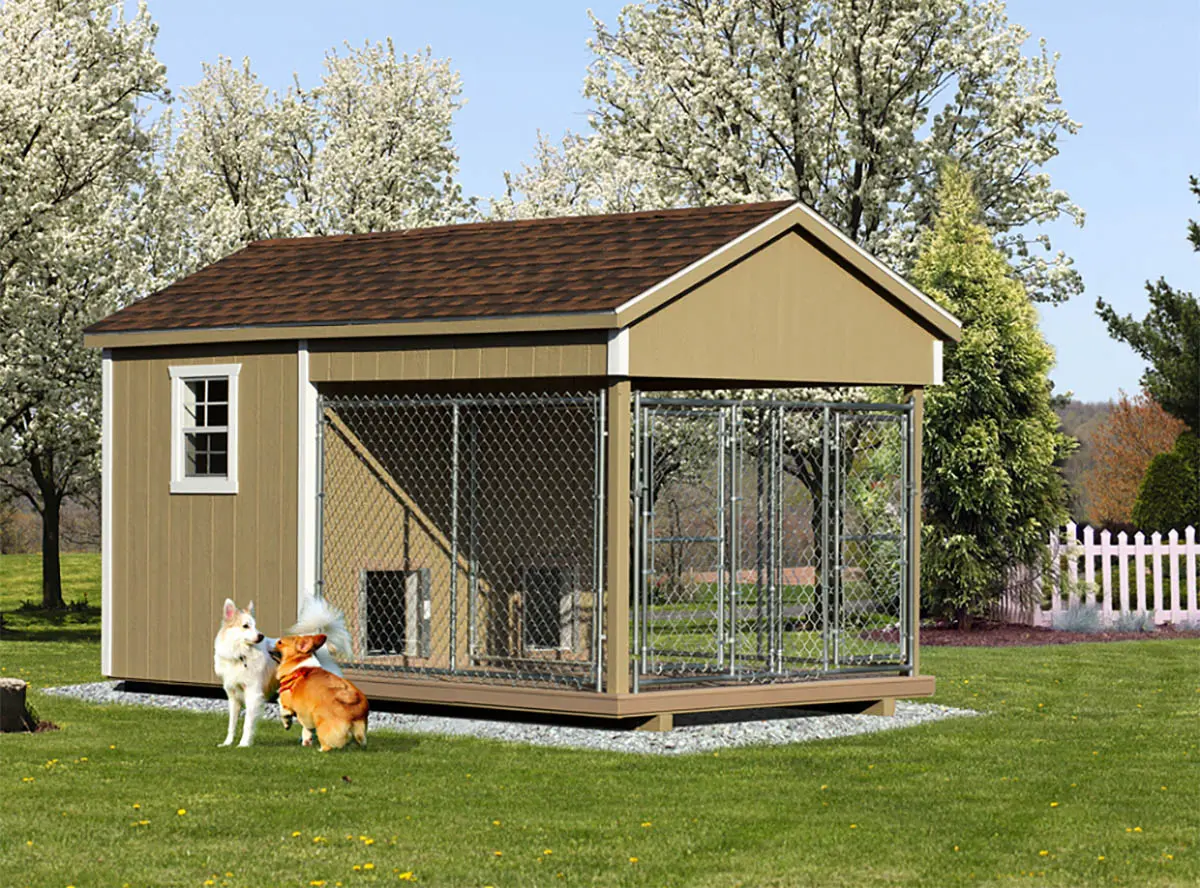
Neglecting regular disinfection can have serious consequences for both the animals and the facility:
1. Increased Disease Outbreaks
Without regular disinfection, kennels become hotspots for the spread of infectious diseases. This can lead to frequent outbreaks, causing widespread illness among the animals. Outbreaks can be challenging to control once they occur, leading to significant health risks and increased veterinary costs.
2. Poor Animal Welfare
Animals housed in unsanitary conditions are more likely to experience stress, anxiety, and discomfort. Chronic exposure to a dirty environment can lead to long-term health issues, decreased immune function, and a higher susceptibility to diseases.
3. Negative Reputation
Facilities that neglect proper disinfection protocols risk developing a negative reputation. Pet owners are less likely to trust and use the services of a kennel known for poor hygiene practices. This can lead to decreased business and financial losses.
4. Regulatory Non-Compliance
Failing to adhere to health and safety regulations can result in penalties, fines, and even closure of the facility. Regular disinfection ensures compliance and helps maintain the operational integrity of the kennel.
Best Practices for Effective Kennel Disinfection

Implementing effective disinfection protocols involves more than just occasional cleaning. Here are some best practices to ensure thorough and consistent disinfection:
1. Develop a Disinfection Schedule
Create a structured disinfection schedule that outlines daily, weekly, and monthly tasks. This schedule should include specific areas to be disinfected, the frequency of cleaning, and the products to be used. Adhering to a consistent routine ensures that no areas are overlooked.
2. Choose the Right Disinfectants
Select disinfectants that are effective against a broad spectrum of pathogens, including bacteria, viruses, fungi, and parasites. Ensure that the products used are safe for animals and approved by relevant regulatory bodies, such as the Environmental Protection Agency (EPA). Follow the manufacturer’s instructions for dilution, application, and contact time to maximize effectiveness.
3. Train and Educate Staff
Proper training is essential for ensuring that staff members understand the importance of disinfection and know how to perform their tasks correctly. Regular training sessions should cover topics such as:
- Correct use and handling of disinfectants.
- Personal protective equipment (PPE) and safety measures.
- Cleaning techniques and procedures.
- Recognizing signs of infection and contamination.
4. Prioritize High-Touch Areas
High-touch areas, such as door handles, light switches, feeding bowls, and bedding, should be disinfected more frequently. These surfaces are more likely to harbor pathogens and contribute to the spread of diseases.
5. Mechanical Cleaning Before Disinfection
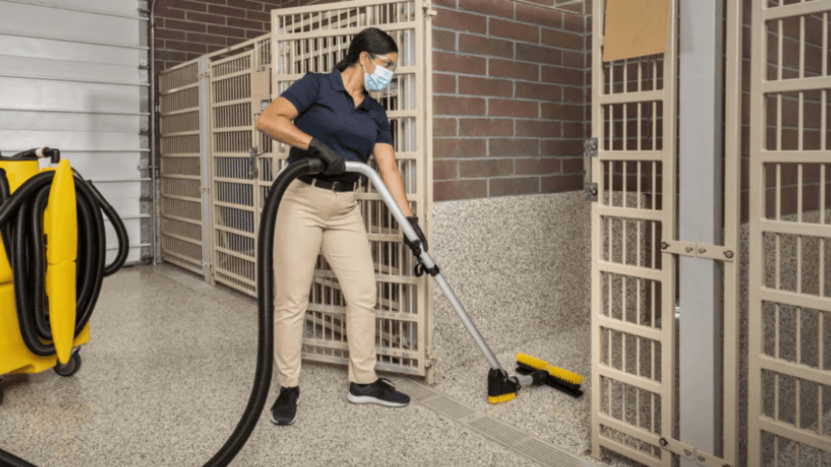
Mechanical cleaning involves removing organic matter, such as dirt, feces, and food particles, from surfaces before applying disinfectants. This step is crucial because organic matter can inhibit the effectiveness of disinfectants. Use soap and water to scrub surfaces thoroughly before disinfecting.
6. Utilize Advanced Disinfection Techniques
Consider incorporating advanced disinfection techniques such as:
- Fogging and misting ─ These methods distribute disinfectants in fine droplets, ensuring even coverage and reaching difficult areas.
- Ultraviolet (UV) light ─ UV light can be used to sterilize surfaces and air, killing pathogens without the use of chemicals.
- Steam cleaning ─ High-temperature steam effectively kills pathogens and is an eco-friendly option.
7. Maintain Proper Ventilation
Good ventilation is essential for reducing the concentration of airborne pathogens and ensuring a healthy environment. Ensure that the kennel has adequate airflow and consider using air purifiers to improve air quality.
8. Monitor and Record Disinfection Activities
Keep detailed records of all cleaning and disinfection activities. This documentation helps in monitoring compliance with the disinfection schedule and provides valuable information during inspections or in the event of an outbreak.
Conclusion
Regular kennel disinfection is a fundamental aspect of animal health and welfare. It prevents the spread of infectious diseases, controls parasites, and ensures a clean and comfortable environment for animals. Neglecting this crucial practice can lead to serious health risks, regulatory issues, and a damaged reputation for animal care facilities.
By implementing best practices, including developing a structured disinfection schedule, choosing the right disinfectants, training staff, and utilizing advanced disinfection techniques, kennels can provide a high standard of care and create a safe haven for the animals they serve.
Prioritizing regular disinfection is not only a matter of compliance but a commitment to the health and happiness of our furry companions.
